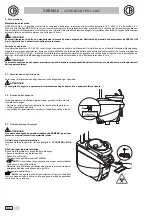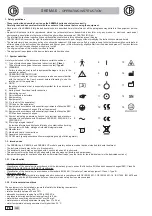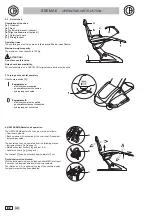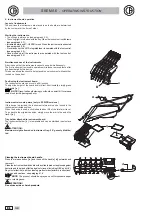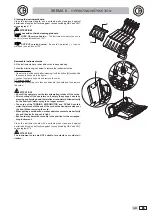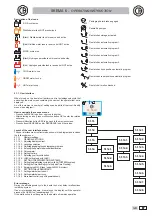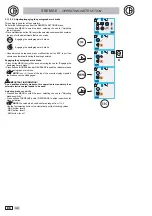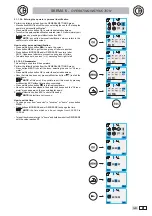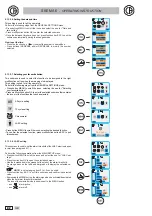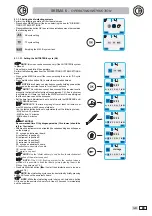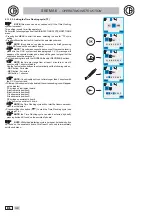
80
SKEMA 6
-
OPERATING INSTRUCTION
80
GB
80
GB
Once the dental unit has been installed in the offi ce and the ducts are fi lled with water, the equipment is at risk of contamination caused by aquatic
microorganisms harbored in the municipal water supply capable of forming biofi lm in the ducts. To effectively overcome this problem, it is advisa-
ble to install the dental unit only at the moment in which the professional will use it daily and perform the disinfecting procedures at the specifi ed
frequency starting from the day in which it is installed.
NOTE: Contact your local dealer or Dental association for more detailed information about national laws and requirements.
1.4. Cleaning and disinfecting
Cleaning is the fi rst step of any disinfecting process. Physically scrubbing with detergents and surface-active substances and rinsing with water
removes a considerable amount of micro organisms. If a surface is not clean fi rst, the disinfecting process cannot be successful. If a surface cannot
be adequately cleaned, it should be protected with barriers. The external parts of the equipment must be cleaned and disinfected with hospital-grade
tuberculocide products effective for HIV, HBV prevention (medium grade) and specifi c for small surfaces.
Pay strict attention to all the cleaning product manufacturer’s instructions, warnings and cautions.
The wide range of drugs and chemical products used in the dentist’s offi ce can damage the coated surfaces and plastic parts. Research and tests
run show that the surfaces cannot be fully protected against the harsh action of all products available on the market. We therefore recommend pro-
tecting with barriers Whenever possible. The harsh actions of chemical products also depend on the amount of time they are left on the surfaces. It
is therefore important not to leave the product on the surfaces longer than the time specifi ed by the manufacturer.
Due to the harsh effects of the active substances present in disinfectants, products that contain the following maximum percentage of chemical
disinfectants should be used:
•
Ethanole 96%
. Concentration: maximum 30 g per 100 g of disinfectant.
•
Propanole
. Concentration: maximum 20 g per 100 g of disinfectant.
•
Combination of ethanole and propanole.
Concentration: the combination of the two should be maximum 40 g per 100 g of disinfectant.
CASTELLINI S.p.A. has conducted compatibility tests amongst the main disinfectants available on the market and its own products, the most suitable
disinfectants are listed below:
• Plastic surfaces, coated and non-coated surfaces
- STER 1 PLUS ( Castellini ).
• Upholstery.
-RelyOn Virkosept ( Du Pont ).
-Plastisept ( Alpro ).
-Zeta 3 Foam ( Zhermack ).
ATTENTION!
The acid used for the mordant process stains VISCO-elastic upholstery. Immediately rinse with plenty of water if acid spatters on the
upholstery.
ATTENTION!
• Do not use products containing isopropyl alcohol (2-propanol,iso-propanol).
• Do not use products that contain sodium hypochlorite (bleach).
• Do not use cleaners that contain phenol.
• Do not spray the selected products directly on the surfaces.
• Never combine products with each other or with liquids other than the products listed above.
• All products must be used as directed by the manufacturer.
Cleaning and disinfecting instructions.
Clean and disinfect with single-use non-abrasive paper (avoid using recycled paper) or sterile gauze.
Do not use sponges or in any case, any material that can be reused.
ATTENTION!
• Shut off the dental unit prior to clean and disinfecting the external parts.
• All material used to clean and disinfect must be thrown away.

